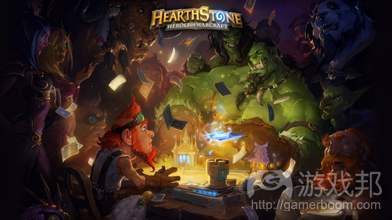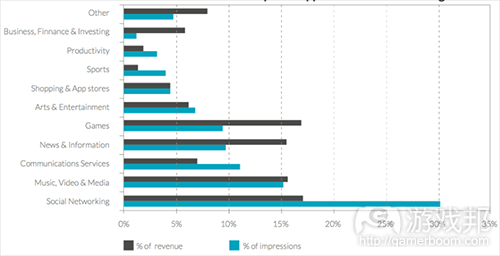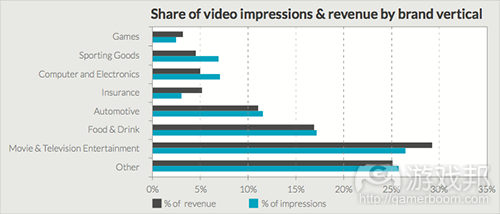每日观察:关注Zynga裁员18%及动视数字游戏收益(5.7)
1)据gamasutra报道,Zynga日前公布了Don Mattrick离任之后的最新财报,今年第一季度该公司收益从去年同期的1.61亿美元增长至1.67亿美元。
其中63%收益来自移动领域,这一比例同比去年增长84%。
但该季度Zynga亏损670万美元,去年同期亏损为630万美元。
最大的消息是该公司还宣布裁员364人,在其所有员工中占比将近18%,并由此关闭了位于佛罗里达奥兰多的工作室。
该公司将其业务重心缩小至5种游戏类型:动作战略、社交博彩、投入和表达,休闲以及竞速游戏。值得注意的是,Zynga一年前还宣布扩大其游戏题材范围,而今却已完全退出体育游戏题材,并将取消对《NFL Showdown》以及《Tiger Woods Golf》这两个项目的开发和支持。
2)Digi-Capital最新报告指出,2015年第一季度身价达10亿美元的移动互联网公司合计市值达5750亿美元。
报告指出在目前的79家移动互联网巨头(游戏邦注:这些公司仅限移动互联网领域,不包括硬件制造商,无线基础设备供应商以及芯片制造商)中,有69家公司身价介于10亿美元至100亿美元,有9家公司身价高达100亿至1000亿美元,而Facebook一家公司的身价就高达2200亿美元。
在Digi-Capital报告所定义的17个移动互联网行业(总价值为5750亿美元)包括:Facebook(市值占比38%),其他社交网站(占比17%),旅行/运输(11%),移动电子商务(10%)以及占比介于1%至10%的通信服务,游戏,实用工具,美食与饮料,音乐,生活方式,娱乐行业。
而企业移动,应用商店/分销,科技、广告、导航、照片及视频,以及生产工具这几个行业相加所占市值不足2%。
这些移动行业巨头多诞生于美国,美国公司数量占比三分之一(市值占比四分之三),中国公司数量占比24%(市值占比10%)。报告称这些移动互联网巨头在第一季度令股东增加了650万美元的价值,平均一天为7.25亿美元。
3)据venturebeat报道,暴雪日前宣布旗下卡牌战斗游戏《Hearthstone》在PC、Mac和移动平台的用户超过3000万,尽管该游戏用户数量难敌King游戏《Candy Crush Saga》(每日用户超过9000万)以及PC在线游戏《英雄联盟》(月活跃用户达7000万),但其收益却相当可观,进入16个地区的iPhone畅销榜单前10名,进入63个地区畅销榜单前100名。
该游戏在韩国位居iPhone畅销榜单第7名,在加拿大位居第12名,在美国排名第14位,在中国则是第18名。
据ThinkGaming报道,这款游戏仅在美国每天收益就达到15.5万美元左右。报道认为该游戏取得这种成就,主要归功于上个月发布了智能手机版本。
4)据gamasutra报道,动视今年第一季度数字游戏业务收益增长76%,达到5.38亿美元;但该季度整体收益同比去年下滑至7.03亿美元(去年同期为7.72亿美元)。
《魔兽世界》订阅用户已缩水至710万(这些用户每月付费15美元),但新游戏则表现强劲,《Hearthstone》和《Destiny》所创造收益将近10亿美元。
5)据gamesbeat报道,EA日前公布财报显示,2015财年公司总收益达43亿美元,其中数字游戏收益为22亿美元(包括5.24亿美元的手机游戏收益);EA旗下所有手机游戏目前月活跃用户达1.65亿。
6)移动广告平台Opera Mediaworks最新报告显示,移动视频广告将越来越受欢迎(该广告平台服务于全球90%的顶级广告商,覆盖了8亿独立手机用户),这种广告类型在过去一年中增长了5倍。
视频广告在Opera目前的广告印象中占比将近13%,而2014年初这一比例仅为2.5%。
过去视频广告给发行商创造的收益甚少,但现在为发行商创造的收益比例达55%。
报告称现在的移动用户/消费者出现了有意识地在移动设备上观看视频广告的行为,这种变化在富裕的发达国家表现最明显,其中美国表现最为显著,其次是加拿大、英国、澳大利亚、日本和法国(越发达的国家就越可能创造提供高质量手机视频广告的基础条件,并且其高端移动设备的普及率也更高)。
从Opera的观察来看,Android的移动广告收益超过iOS;社交网站应用在移动平台上的广告效能占有优势 ,其广告印象占比30%,收益占比17%。休闲手机游戏的广告收益排名第二,但广告印象则与之相踞甚远。
使用视频广告最多的行业是电影和TV网络,其次是美食与饮料,第三名是汽车行业。值得注意的是,游戏对视频广告的使用率并不高,甚至排在了体育用品之后。(本文由游戏邦编译,转载请注明来源,或咨询微信zhengjintiao)
1)Zynga lays off 18% of staff to ‘narrow and intensify our execution focus’
By Christian Nutt
Today, a beleaguered Zynga announced its latest financial results — the first after it said goodbye to CEO Don Mattrick. For the three-month period ending March 31, it increased its “bookings,” or revenue from its games — which is how the free-to-play industry measures itself — slightly year-on-year, from $161 million to $167 million.
63 percent of those bookings were on mobile — up 84 percent year-on-year.
However, the company still showed a loss — $6.7 million for the quarter, a bigger loss than the comparable period last year, which was $6.3 million.
The biggest news, however, is that the company has announced plans to shed a large number of staff: 364 people, or approximately 18 percent of its workforce. The company is closing its Orlando, Florida studio in this move. CEO and founder Mark Pincus told Re/code that these layoffs mainly affect central services and corporate, with an aim at “de-layering and de-cluttering the organization.”
On its investor call, CFO David Lee said this change was aimed at “simplifying our organization and returning to an entrepreneurial environment.”
Why slim down the game catalog?
The company has also “narrowed” its focus down to five game genres: Action Strategy, Social Casino, Invest and Express, Casual, and Racing. A year ago, the company announced plans to expand its genre offerings. In fact, the company is exiting the sports category, and the company will cease developing and supporting NFL Showdown and Tiger Woods Golf.
Lee said that this narrowed focus will help the company “capitalize on the advantages of category depth” — brand recognition and a large player base in the categories Zynga operates in.
In the investor call, Pincus expanded on this further: The goal is to “Narrow and intensify our execution focus around the big opportunities that are in front of us today,” he said. “We’ve been surrounded by too many opportunities as a company and it’s been historically too hard for us to get to a narrow enough focus.”
That explains the plan to back away from potentially lucrative sports titles: “We don’t want to pursue sports at the expense at near term more obvious opportunities,” Pincus said.
In the future, Zynga will approach new games this way: with “more small teams to get out ahead of us and pursue new innovations, but we want to be careful about when we step up investment in those teams. We don’t want to find ourselves in the middle. We want to be pursuing proven opportunities in proven categories with proven teams, or we want to have very small teams out proving a new opportunity.”(source:gamasutra)
2)Mobile Internet ‘unicorn’ companies now valued at $575B worldwide
Mark Sullivan
Successful CMOs achieve growth by leveraging technology. Join us for GrowthBeat Summit on June 1-2 in Boston, where we’ll discuss how to merge creativity with technology to drive growth. Space is limited. Request your personal invitation here!
The market value of mobile Internet unicorns — software companies valued at $1 billion or more by public or private investors — hit $575 billion in the first quarter of 2015.
So says a new report from Digi-Capital, a San Francisco-based mobile Internet advisory firm.
Digi-Capital believes there are now 79 mobile Internet unicorns, with 69 of them valued between $1 billion and $10 billion, nine valued between $10 billion and $100 billion, and one — Facebook — valued at $220 billion.
The firm identified unicorns in 17 mobile Internet sectors, with a total valuation of $575 billion (or $355 billion, excluding Facebook).
The sectors include: Facebook (38 percent of total value), followed by other social networking (17 percent), travel/transport (11 percent), and m-commerce (10 percent). Messaging, games, utilities, food and drink, music, lifestyle, and entertainment each delivered between 1 percent and 10 percent of value, Digi-Capital said.
Enterprise mobility, app store/distribution, tech, advertising, navigation, photo and video, and productivity combined were worth less than 2 percent of the total.
Mobile Internet Unicorns Sector Value
And unicorns, it turns out, tend to be born in the U.S.A.
“If you thought distribution by sector was uneven, hold on to your Stetson,” said Digi-Capital managing director Tim Merel in a statement. “American companies represented a massive three quarters of the value of mobile Internet unicorns globally, as well as a third of volume.”
Even without Facebook, Merel added, the U.S. produced a third of value and volume. China produced the second-highest number of unicorn companies (24 percent) and the second-highest market value (10 percent).
Digi-Capital said mobile Internet unicorns added $65 billion in shareholder value in the first 3 months of 2015, or $725 million dollars a day.
Digi-Capital defines mobile unicorns as companies with “substantial” parts of their business in mobile Internet, excluding handset makers, wireless infrastructure providers, and chip makers.
The firm advises mobile Internet, augmented reality and virtual reality, gaming, and other digital client companies in America, Asia, and Europe.(source:venturebeat)
3)Hearthstone’s 30M players is great, but its revenues are even more impressive
Jeff Grubb
Gaming execs: Join 180 select leaders from King, Glu, Rovio, Unity, Facebook, and more at GamesBeat Summit. This is an invite-only event so apply now!
It turns out that releasing a free-to-play game on smartphones can help you make more money.
Publisher Blizzard revealed today that more than 30 million people have played its online card battler Hearthstone on PC, Mac, smartphones, or tablets. And that’s a pretty decent number — although it doesn’t reveal exactly how active the community is on a monthly or daily basis. But that doesn’t really matter because the game is obviously catching on with many of the people who do play it, and you can tell that’s the case by how well it’s performing on the top-grossing charts on iOS and Android — and it’s doing quite well.
First, let’s look at the 30 million players in context. That’s a big number, but it isn’t groundbreaking for a free-to-play game. Keep in mind that developer Rockstar sold more than 34 million copies of its Grand Theft Auto V game, which typically costs around $60. In the world of free-to-play — especially on mobile — it’s not out of the question to have 30 million monthly active players. Candy Crush Saga from publisher King, for example, has more than 90 million people who play it every single day. On PC, League of Legends has around 70 million monthly active players.
Hearthstone is still not in the same league as some of the top free-to-play games. But that’s OK, because it is making money, which is a sign that it is great at retaining players and getting them to spend money.
Hearthstone is in the top 10 highest-grossing apps for iPhone in 16 different countries, according to App Annie. It is among the top 100 in 63 nations.
In South Korea, a huge market for mobile spending, it is the No. 7 top-grossing iPhone app. It is No. 12 in Canada, No. 14 in the U.S., and No. 18 in China.
In the United States alone, it is making around $155,000 every day, according to ThinkGaming.
And clearly, this success is largely due to Hearthstone finally rolling out on smartphones last month. The game debuted in March 2014 on PC and Mac, and it rolled out to iPad in April of last year. If found an audience, but it actually slipped down the charts several times and risked losing its momentum. That’s no longer the case as the game is exploding in popularity now that everyone with an iPhone or Android handset can get it for free.
And after adding content to Hearthstone and refining its mechanics for more than a year, Blizzard seems like it has a game that will stick around and make it money for a long time.(source:venturebeat)
4)World of Warcraft sheds 3 million subscribers in a quarter, but Activision is doing fine
By Christian Nutt
Activision seems to be doing well, all things considered: It did better for the first three months of 2015 than anticipated, and the company has raised its full-year earnings expectations to $4.425 billion, and its digital revenues have climbed to 76 percent of its first-quarter earnings — a record $538 million.
However, revenues are oveerall down for the quarter year-on-year: $703 million compared to $772 million for 2014.
Notable is a huge drop in World of Warcraft subscriptions. After the release of the Worlds of Draenor expansion last year, the company had “more than 10 million” subscribers; it ended March 2015 with 7.1 million.
But new games are picking up the slack: Life-to-date, Hearthstone and Destiny have generated “nearly $1 billion” in revenues.(source:gamasutra)
5)EA’s digital and mobile revenues set new records — $2.2B total for fiscal 2015
Jeff Grubb
Gaming execs: Join 180 select leaders from King, Glu, Rovio, Unity, Facebook, and more at GamesBeat Summit. This is an invite-only event so apply now!
Electronic Arts is making more money on PlayStation 4 and Xbox One than any other publisher, but that reaches far beyond $60 games on retail shelves.
The publisher reported its fiscal 2015 results today, and it revealed that it set a new record for money it made from digital and mobile sources. Of its $4.3 billion in total revenue, $2.2 billion was digital. Mobile, which is included in digital, added $524 million to that for the year. Both of these are high points for EA and reflects the company’s aggressive approach to operating as a modern publisher.
Fiscal 2015 was the year that EA fully shifted to embrace the way mobile games work. That included supporting its hits like The Simpsons: Tapped Out and releasing new apps like SimCity: BuildIt. But most important, EA’s mobile strategy shifted all of its sports games from premium-pricing models to free-to-play. Madden Mobile, FIFA Ultimate Team, and others now have more players than ever and are regularly among the top-grossing games on iOS and Android.
EA now has 165 million monthly active players for all of its mobile games.
EA is also one of the few publishers heavily pushing digital games on consoles. Last year, the company introduced its EA Access program for Xbox One. This $5-per-month subscription service (or $30 for a year) lets players get discounts on new digital releases and it even lets them start playing them early. On top of that, Access comes with an instant library of older games that consumers have access to for as long as they subscribe to the service. The publisher didn’t share any details about how EA Access is performing.
Finally, EA is still operating its Origin PC distribution service, which had a good year thanks to releases like role-playing fantasy game Dragon Age: Inquisition and cops-and-robbers shooter Battlefield: Hardline.(source:venturebeat)
6)Mobile video advertising up 5X in a single year in Opera Mediaworks ‘state of the ad’ report
John Koetsier
Mobile video advertising continues to get hotter and hotter, according Opera Mediaworks‘ latest “state of mobile advertising” report.
The ad platform, which serves 90 percent of the top global advertisers and touches 800 million unique mobile users, says that video advertising on mobile has exploded, jumping 5 times higher between today and a year ago. Video ads now comprise almost 13 percent of Opera’s delivered impressions, up from 2.5 percent in early 2014, and revenue to publishers is up even more sharply.
Video is now responsible for 55 percent of revenue for publishers, Opera said today.
“What we get excited about is TV for the next generation,” Opera CMO Will Kassoy told me last week. “The number one action that consumers do after a brand campaign is click to watch more video.”
Clearly, these are results from just one ad platform — an acknowledged leader in video to boot — and not necessarily representative of the entire mobile advertising ecosystem. But just as clearly, video on mobile is booming. Other players such as Vungle are seeing video grow as well.
And Opera is not just any mobile ad platform.
With its global reach and a solution set that is the result of at least six mobile advertising acquisitions, the company says it is not just the largest independent (read: not Google or Facebook) mobile advertising player, it’s bigger than its top competitors by more than 20 percent.
mobile video ads countries“We hit a major milestone in Q4,” Kassoy said. “We surpassed $100 million in revenues for the quarter for the first time. We’re the largest independent ad network, and our reach is now over one billion monthly impressions.”
That probably puts it on a $500 million or better run rate for 2015, and it means that we’re not just seeing one small company grow in one area. Rather, we’re seeing evidence of a massive and significant change in consumer/mobile user behavior: intentionally watching video advertising on small screens.
It’s not shocking that this change is most noticeable in richer, developed nations.
The U.S. leads in this category, followed by Canada, the U.K., and Australia. German, Japan, and France round out the top seven nations on this score. The richer, larger nations tend to have better infrastructure for delivering quality video on mobile, higher levels of fast mobile device penetration, and — of course — more advertisers trying to reach potential customers for higher-priced goods and services.
What is shocking is just how much higher-value these video impressions are.
Video is now 12.8 percent of impressions across the Opera Mediaworks demand-side empire, but it accounts for that already mentioned 55 percent of dollars delivered to publishers. In other words, this is an ad unit that punches above its weight from both the publisher and advertiser point of view. And, in this age of hyper-measurement of impressions, conversions, attributions, and ROI, it’s an ad unit that is proving its effectiveness.
In other news, Android has overtaken iOS in mobile ad revenue, at least for the segment of users that Opera sees, which is a little more globally distributed than other more U.S., Asian, or European-focused networks. Opera has significant presence in Africa, South America, and the Middle East, all of which skew Android to a higher degree than North America or Europe.
And there’s good news for social networks:
Social networking apps took in the lion’s share of both ad impressions and — narrowly — ad revenue in mobile, with 30 percent of the impressions and about 17 percent of the revenue. Casual mobile games came in a close second in revenue on far fewer impressions.
Perhaps not surprisingly, movie and TV networks accounted for the largest use of video in their ad campaigns, followed by food and drink, and then automotive:
Interestingly, games did not make nearly as extensive use of video.
“The key question is how do you drive marketing effectiveness and efficiency,” Kassoy said. “The brands that are more advanced and sophisticated are moving from awareness — like TV — to some form of engagement … which would lead to learning more about a product or service, and ultimately to a purchase.”
What are the next big changes for video? Native advertising and programmatic, said Kassoy.(source:venturebeat)













































 闽公网安备35020302001549号
闽公网安备35020302001549号